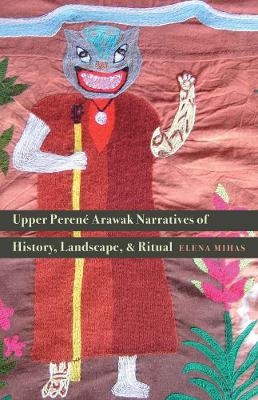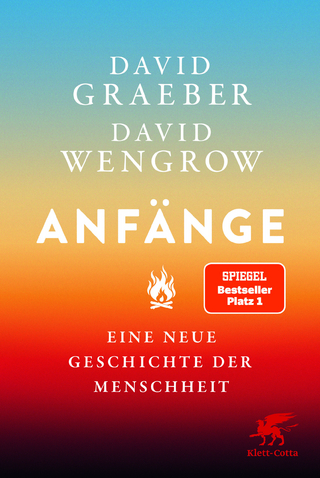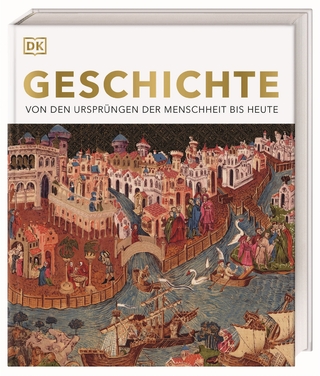
Upper Perené Arawak Narratives of History, Landscape, and Ritual
University of Nebraska Press (Verlag)
978-0-8032-8564-4 (ISBN)
Published through the Recovering Languages and Literacies of the Americas initiative, supported by the Andrew W. Mellon Foundation
The rich storytelling traditions of the Alto Perené Arawaks of eastern Peru are showcased in this bilingual collection of traditional narratives, ethnographic accounts, women’s autobiographical stories, songs, chants, and ritual speeches. The Alto Perené speakers are located in the colonization frontier at the foot of the eastern Andes and the western fringe of the Amazonian jungle. Unfortunately, their language has a slim chance of surviving because only about three hundred fluent speakers remain. This volume collects and preserves the power and vitality of Alto Perené oral and linguistic traditions, as told by thirty members of the Native community.
Upper Perené Arawak Narratives of History, Landscape, and Ritual covers a range of themes in the Alto Perené oral tradition, through genres such as myths, folk tales, autobiographical accounts, and ethnographic texts about customs and rituals, as well as songs, chants, and oratory. Transcribed and translated by Elena Mihas, a specialist in Northern Kampa language varieties, and grounded in the actual performances of Alto Perené speakers, this collection makes these stories available in English for the first time. Each original text in Alto Perené is accompanied by an English translation, and each theme is introduced with an essay providing biographical, cultural, and linguistic information. This collection of oral literature is masterful and authoritative as well as entertaining and provocative, testifying to the power of Alto Perené storytelling.
Elena Mihas is a postdoctoral associate in anthropological linguistics at James Cook University in Australia.
List of Illustrations
Acknowledgments
Introduction: Objective, Method, Data, and Structure
Orthography
Abbreviations
Synopsis of Texts
Part 1. History
1. Pava vitsikirori kipatsi
(Pava, Who Made the Earth)Cristobal Jumanga Lopez 2. Okoñaatantakari kaniri(How Sweet Manioc Appeared)Alberto Pérez Espinoza 3. Okoñaatantari paamari(How Fire Came into Existence)Ruth Quillatupa Lopez 4. Pava Apinka(God Apinka)Luis Mauricio Rosa 5. ApinkaBertha Rodríguez de Caleb and Abdias Caleb Quinchori 6. ApinkaElías Meza Pedro, Gregorio Santos Pérez, and Livia Julio de Quinchori 7. Yookantapakairi virakocha(How the Whites Threw Us Out)Fredi Miguel Ucayali 8. Natsitonini(The Stream of Bones)Manuel Rubén Jacinto 9. Tsika okantakota ovayeritantsi(About the Craft of War)Daniel Bernales Quillatupa 10. Apapanani(The Brook of Liver Parts)Gregorio Santos Pérez 11. Ovayeri inoshikantarori kooya(When Warriors Kidnapped a Woman)Paulina García Ñate 12. Ovayeri inoshikantzi eentsi(The Warriors Kidnapped Children)Ines Pérez de Santos 13. Nonkinkitsatakotero nayironi(I Will Tell about My Deceased Mother-in-Law)Victorina Rosas de Castro 14. Tsika okanta nosaikantakari Marankiaroki(How We Settled Down in Bajo Marankiari)Bertha Rodríguez de Caleb 15. Tsika okanta noñaakoventakiri matsipaye(How I Witnessed Events Involving Witches)Bertha Rodríguez de Caleb Part 2. Landscape 16. Ashiropanko(The Iron House)Gerardo Castro Manuela 17. Atziri yamaniri mapi poña paamari(People Were Worshipping Fire and Stone)Elías Meza Pedro, with Gregorio Santos Pérez 18. Atziri yamaniri paamari(People Were Worshipping Fire)Cristobal Jumanga Lopez 19. Tzivi(Salt)Ruth Quillatupa Lopez 20. Tzivi(Salt)Abraham Jumanga Lopez 21. Manitzipanko(The Jaguar House)Ruth Quillatupa Lopez 22. Imoro Naviriri(The Naviriri Hole)Elías Meza Pedro 23. Otzinantakari otzishi omontero Samamparini(How the Hill Appeared across from the Village of Villa Progreso)Raul Martin Bernata 24. Anashironi(The Anashirona Stream)Julio Castro Shinkaki, with Delia Rosas Rodríguez 25. PichanakiOtoniel Ramos Rodríguez, with Daniel Bernales Quillatupa 26. PichanakiAlmacia Benavidez Fernandez 27. Kiatsi(The Owner of the River)Carmen Pachiri Quinchori 28. Peyari(The Bone Spirit)Gregorio Santos Pérez 29. Iñaaventa kamari Kovatsironi(Speaking with Regard to the Demon from Kovatsironi)Ines Pérez de Santos 30. Tsamirimenta(The Curassow Crest Stone)Moises Santos Rojas 31. Maninkaroite(The Invisible Women)Moises Santos Rojas 32. Ashitarori otzishipaye(Masters of the Hills)Elena Nestor de Capurro, with Victoria Manchi de Martin 33. Inkaari Chorinkaveni(Lake Churingaveni)Moises Santos Rojas 34. Chorinkaveni(Churingaveni)Daniel Bernales Quillatupa
Part 3. Ritual
35. Ampinateri Pava(What We Will Offer to Pava)Clelia Mishari, with Gregorio Santos Pérez 36. Kamenantsi(Traditional Advice)Daniel Bernales Quillatupa 37. Tsika okantya ashimaapakotantyari(How to Be a Good Fisherman)Gregorio Santos Pérez 38. Yamaniri pava impereta(They Were Worshipping the Stone Divinity)Delia Rosas Rodríguez 39. Arika ashimaatya(When We Fish)Daniel Bernales Quillatupa 40. Ookantyarori inkani(How to Chase Away Rain)Daniel Bernales Quillatupa 41. Shinavaite ovariri atziri(Shinavaite Who Ate People)Abdias Caleb Quinchori 42. Okoñaatantakari mavira(How Mavira Appeared)Luis Mauricio Rosa, with Raul Martin Bernata and Victoria Manchi de Martin 43. MaviraElena Nestor de Capurro 44. MaviraInes Pérez de Santos and Moises Santos Rojas 45. Pavankiri ooria(Solar Deity)Bertha Rodríguez de Caleb 46. Iyovapajirika ooriatsiri(When the Sun Comes Out)Paulina García Ñate 47. Ipantsakoitziri kashiri(They Sing about the Moon)Paulina García Ñate 48. Arika antarote kooya(When a Girl Had Her First Menses)Daniel Bernales Quillatupa 49. Aavakantsi(Taking a Spouse)Gregorio Santos Pérez 50. Kamaki aparoni atziri(When a Person Died)Delia Rosas Rodríguez 51. Ikantakota sheripiari pairani(About Shamans Who Existed in the Past)Daniel Bernales Quillatupa 52. Sheripiari Julio Quintsori(Shaman Julio Quintsori)Frida Thomas Huamán 53. Impantsakoteri isherini(He Will Sing about His Tobacco)Paulina García Ñate 54. Yantavairi sheripiari(Shaman’s Work)Moises Santos Rojas 55. Sheripiari(Shaman)Ines Pérez de Santos 56. Okantakota matsitantsi(About Witchcraft)Ruth Quillatupa Lopez, with Daniel Bernales Quillatupa 57. Ochonkiri Abdias(She Steam-Bathed Abdias)María Virginia Lopez, Abdias Caleb Quinchori, Bertha Rodríguez de Caleb, and Victorina Rosas de Castro 58. Antavairi aavintantzinkaro(Healer’s Work)Luzmila Machari Quinchori
Concluding Remarks
Appendix: Ideophones Used by the Narrators Notes Glossary References Index
| Erscheinungsdatum | 06.03.2016 |
|---|---|
| Zusatzinfo | 27 photographs, 17 illustrations, 3 maps, 1 appendix, 1 glossary |
| Verlagsort | Lincoln |
| Sprache | englisch |
| Maße | 140 x 216 mm |
| Themenwelt | Sachbuch/Ratgeber ► Geschichte / Politik ► Allgemeines / Lexika |
| Geisteswissenschaften ► Geschichte ► Regional- / Ländergeschichte | |
| Geisteswissenschaften ► Sprach- / Literaturwissenschaft ► Sprachwissenschaft | |
| Sozialwissenschaften ► Ethnologie | |
| Sozialwissenschaften ► Soziologie | |
| ISBN-10 | 0-8032-8564-7 / 0803285647 |
| ISBN-13 | 978-0-8032-8564-4 / 9780803285644 |
| Zustand | Neuware |
| Haben Sie eine Frage zum Produkt? |
aus dem Bereich


